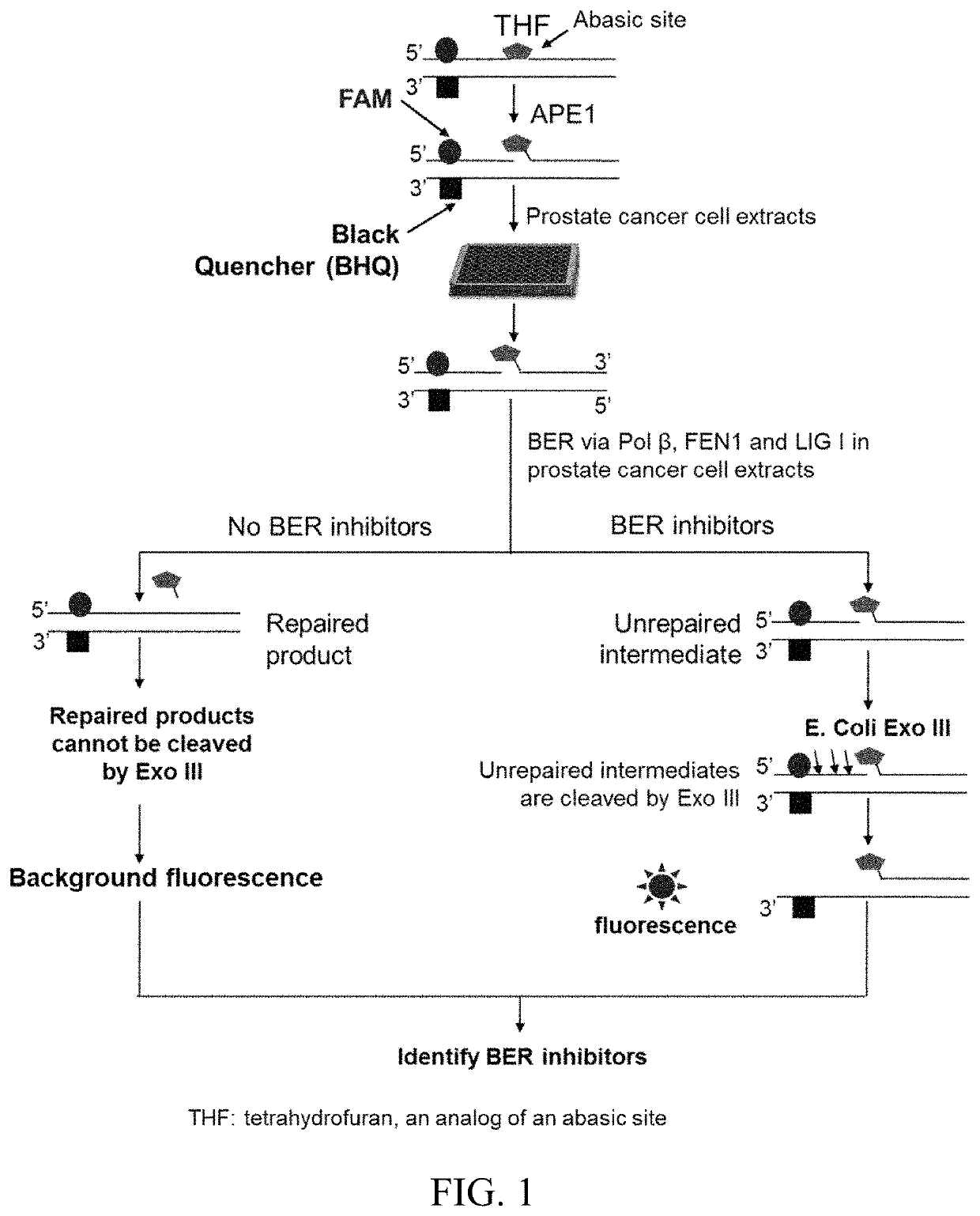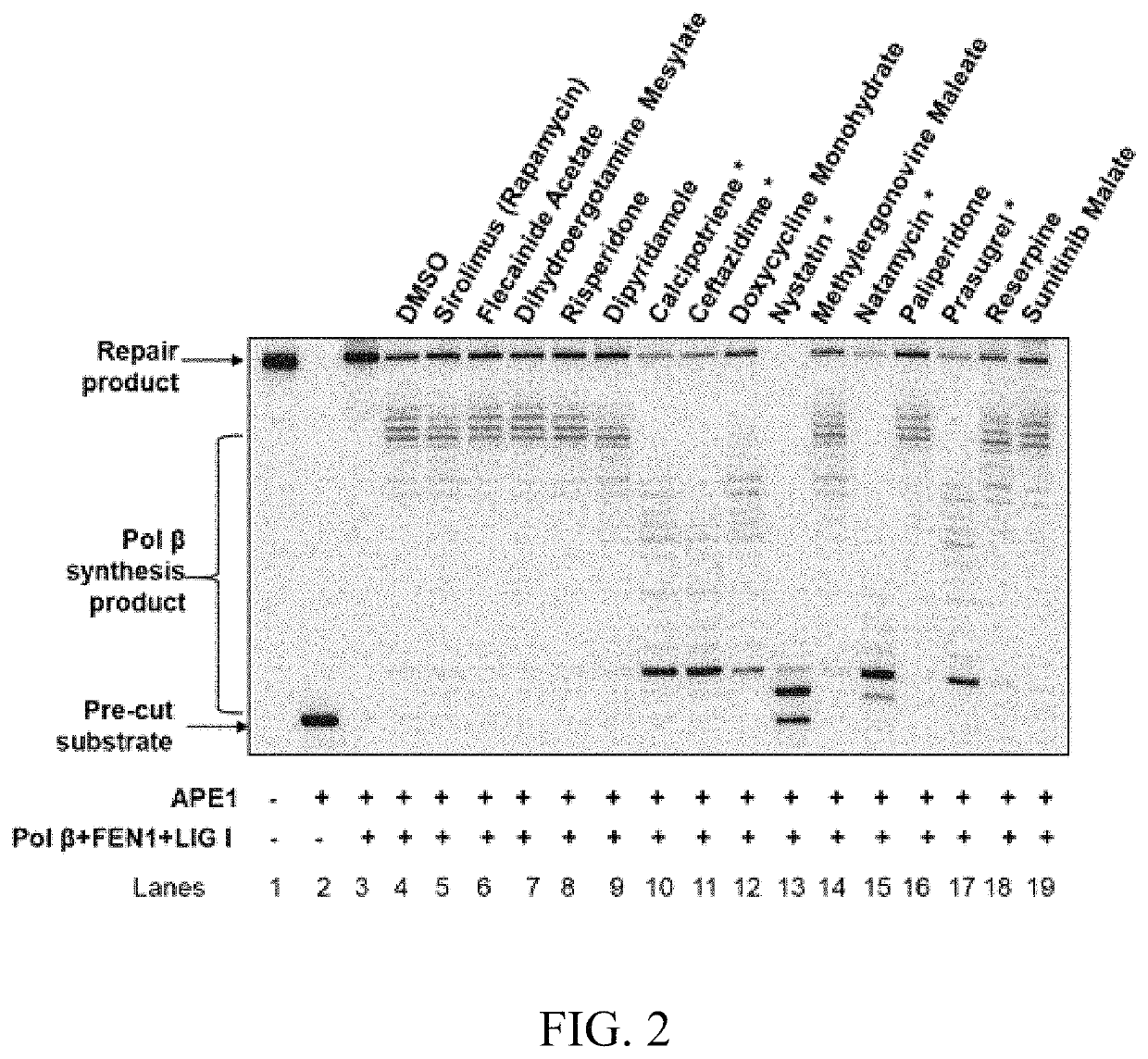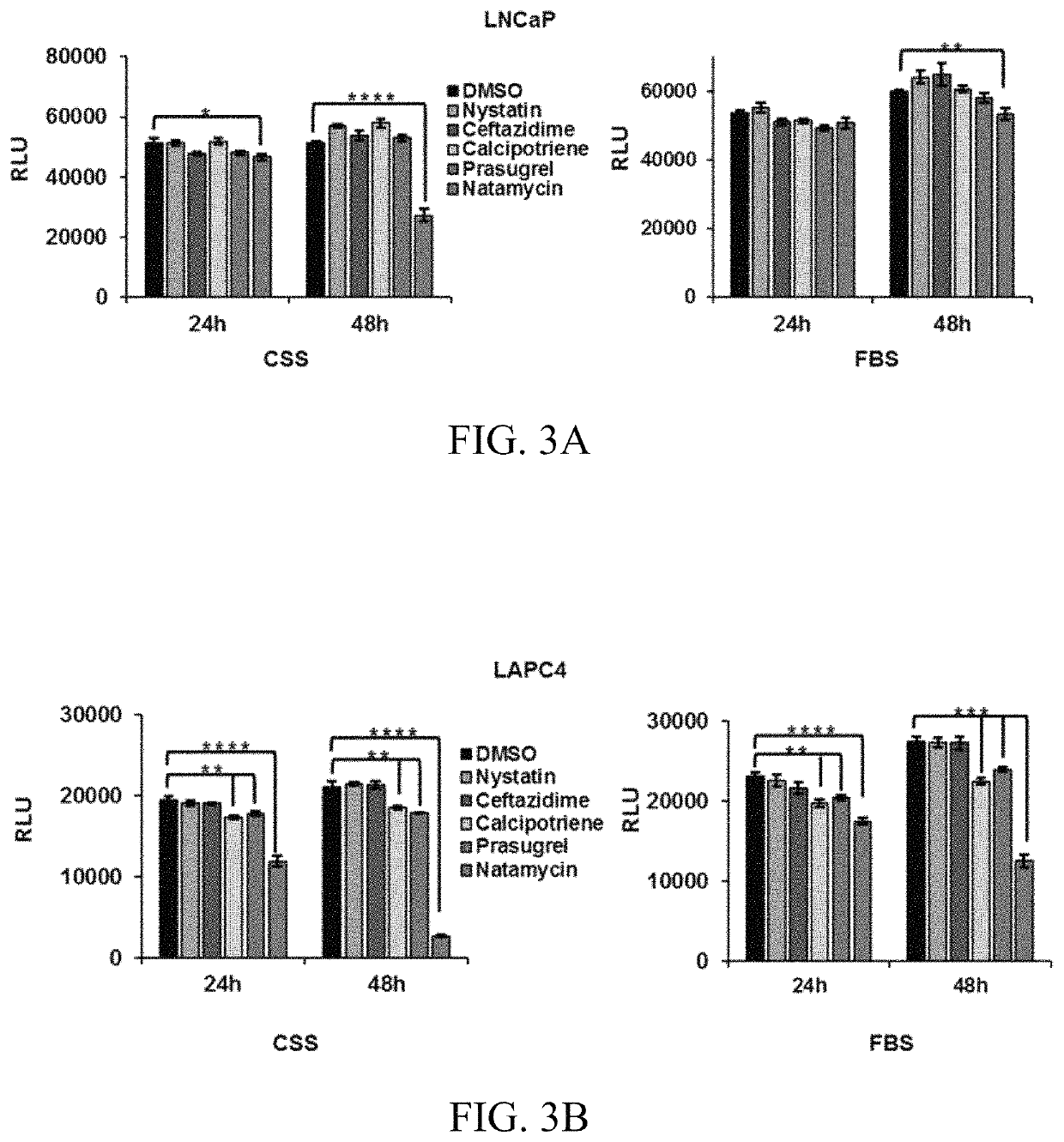Treatments of prostate cancer
a prostate cancer and treatment technology, applied in the field of prostate cancer treatment, can solve the problems of no efficient treatment option for the treatment of resistant prostate, cancer mortality of the elderly male population, and serious impairment of quality of life, so as to reduce the recurrence of prostate cancer, prevent/slow down/reduce the progress and proliferation of prostate cancer cells, and reduce the effect of prostate cancer recurren
- Summary
- Abstract
- Description
- Claims
- Application Information
AI Technical Summary
Benefits of technology
Problems solved by technology
Method used
Image
Examples
example 1
creening of Compounds that Inhibit the BER Pathway
[0122]To identify FDA approved compounds that can directly inhibit the activities of BER enzymes and co-factors, a high throughput, BER pathway-specific screening approach was developed (FIG. 1). This method was used to identify compounds that interfere with the interactions between BER enzymes and co-factors in cancer cells, e.g., the prostate cancer cell line LNCaP. This technique relies on the design of an oligonucleotide substrate with a fluorescent 6-FAM labeled abasic lesion located adjacent to a black quencher (BHQ) in the template strand. Efficient BER of the abasic lesion will lead to quenching of the 6-FAM fluorescent tag, whereas inhibition of BER will spatially separate 6-FAM and BHQ tags increasing fluorescent signal (FIG. 1). Using this approach, a high throughput screening of 774 compounds was performed from the Screen-Well® FDA Approved Drug Library V2, in LNCaP cell lysates. The initial screen identified 26 compounds...
example 2
Screening of Compounds that Inhibit the Activities of BER Enzymes
[0123]Among the 26 identified compounds, nine were DNA intercalators or inhibitors of human DNA topoisomerases and were excluded from further studies. Thus, fifteen FDA approved drugs were selected for further testing. To further confirm the inhibitory effects of the lead compounds on BER, the effects of the compounds on BER reactions reconstituted with purified BER core enzymes were initially determined. The substrate containing the abasic site analogue THF was reconstituted with purified Pol 13, FEN1, and LIG I. The results demonstrated that 5 compounds, calcipotriene, ceftazidime, nystatin, natamycin and prasugrel (FIG. 2, marked *) significantly reduced BER capacity and the production of the BER repair product, suggesting that the compounds inhibited BER by inhibiting the activities of the BER core enzymes.
example 3
n of Inhibitory Effects of the Lead Compounds on the Proliferation of Malignant and Non-Malignant Prostate Cell Lines
[0124]To determine whether lead BER inhibitors affect cell survival, the independently derived androgen-dependent prostate cancer cells, LNCaP and LAPC4, were treated with vehicle (DMSO) or 10 μM nystatin, ceftazidime, calcipotriene, prasugrel, or natamycin. The highest toxicity was observed in prostate cancer cells maintained in androgen depleted conditions treated with natamycin (FIGS. 3A-B).
[0125]Next, whether the same concentration of compounds decreases the viability of the AR negative and nonmalignant prostate derived cells, PNT1A and RWPE1, was tested. In PNT1A, natamycin displayed similar toxicity in both FBS and CSS supplemented medium (FIG. 4A). Medium for RWPE1 cell lines does not include serum, rather it contains the growth hormone supplements, Epidermal Growth Factor (EGF) and Bovine Pituitary Extract (BPE). Calcipotriene, prasugrel, and natamycin signifi...
PUM
| Property | Measurement | Unit |
|---|---|---|
| Roche DP Real Time Cell Analyzer | aaaaa | aaaaa |
| weight | aaaaa | aaaaa |
| total volume | aaaaa | aaaaa |
Abstract
Description
Claims
Application Information
 Login to View More
Login to View More - R&D
- Intellectual Property
- Life Sciences
- Materials
- Tech Scout
- Unparalleled Data Quality
- Higher Quality Content
- 60% Fewer Hallucinations
Browse by: Latest US Patents, China's latest patents, Technical Efficacy Thesaurus, Application Domain, Technology Topic, Popular Technical Reports.
© 2025 PatSnap. All rights reserved.Legal|Privacy policy|Modern Slavery Act Transparency Statement|Sitemap|About US| Contact US: help@patsnap.com



